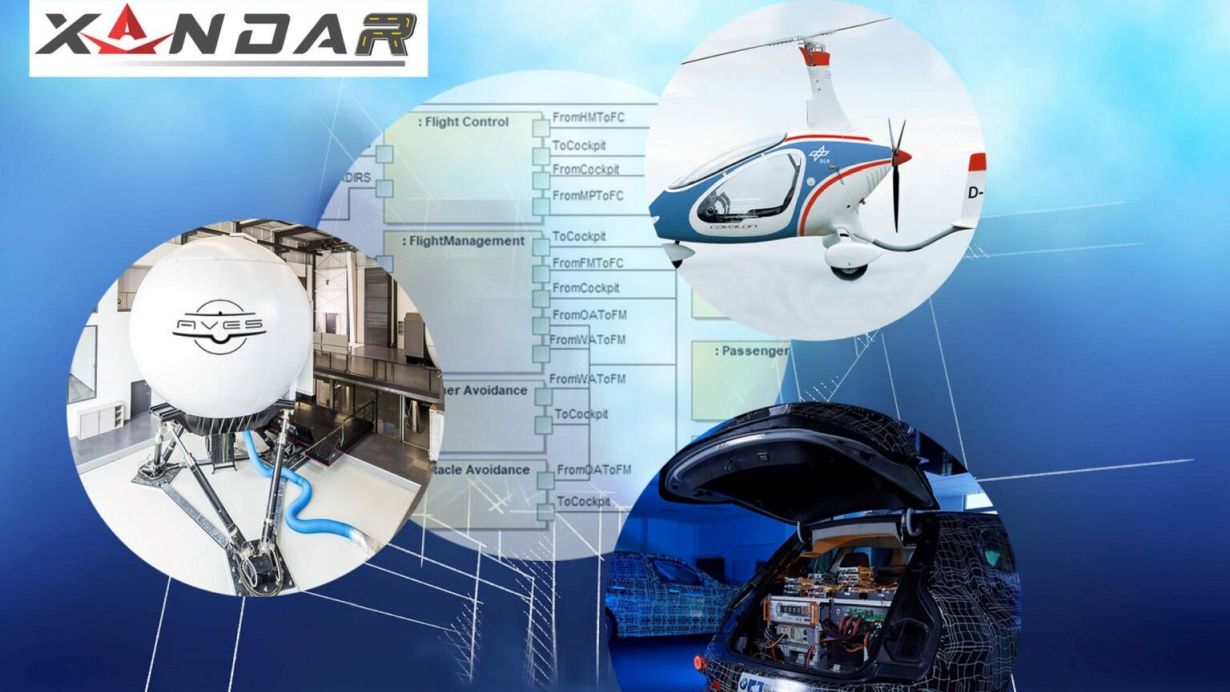Development of embedded electronic systems for future mobility, may it be self-driving cars or autonomous air taxis, depends on complex processing and application services. To better manage this challenge, eight European partners have developed an automated toolchain within the XANDAR collaboration coordinated by Karlsruhe Institute of Technology (KIT). The toolchain is real-time capable and meets major security requirements. It was used by the partners for dependable sensor data fusion in autonomous road traffic and the development of an assistance system that supports pilots in avoiding collisions.
Software systems are of high importance to the transformation of the transport and mobility sector. The requirements to be met by such systems are growing continuously. “For environment recognition, autonomous vehicles use computing-intensive AI-based algorithms. Seamless software integration in large-area networks supports correct route representation,” says Professor Jürgen Becker, Head of KIT’s Institute for Information Processing Technology (ITIV). “When using autonomous vehicles, it must also be ensured that unauthorized interventions from outside will not lead to a drain of data worth protecting or to a dangerous malfunction of systems.” The XANDAR project was aimed at further reducing the manual development expenditure for such critical applications. This will make the process less expensive, less time-consuming, and less error-prone.
Model-based Transformation and System Integration
Within the XANDAR project, researchers developed concepts for the consistent automation of the development of critical applications. They used the new X-by-Construction approach (XbC). Desired system properties are captured formally and transferred to a correct, executable implementation of the software system in a stepwise process. This approach can be applied to a multitude of tasks, including security and real-time requirements. At the end of the project, KIT researchers evaluated the newly developed approaches based on current application-specific requirements.
Successful Evaluation for Automotive and Aircraft Uses
“We integrated the concepts in a toolchain, i.e. a systematic collection of programs that interact with each other to generate the software system,” says Tobias Dörr, researcher at ITIV. “In addition, we developed mechanisms that will be used on the target hardware to control the timing of software applications.” The German Aerospace Center (DLR) and BMW Group (BMW) then applied the approaches to their air mobility and road traffic systems. Using the XbC toolchain, they developed an assistance system for pilots to avoid collisions and a sensor fusion system for autonomous road vehicles.
Advantages Thanks to a Reduction of Costs and Risks
“XANDAR has given rise to a new, standardizable toolchain for developers to design secure software systems for future mobility. It will reduce the risks and costs associated with modern parallel software systems in the mobility sector,” Becker says. Apart from KIT, DLR, and BMW, the University of Peloponnese, the Queen’s University Belfast, AVN Innovative Technology Solutions, Vector Informatik, and Fent Innovative Software Solutions were involved in the collaboration. In the past three years, the project was funded with about EUR 5 million by the European Commission.
Project Information:
X-by-Construction Design Framework for Engineering Autonomous & Distributed Real-time Embedded Software Systems, 2023, DOI: 10.3030/957210
More Information:
https://cordis.europa.eu/project/id/957210
In close partnership with society, KIT develops solutions for urgent challenges – from climate change, energy transition and sustainable use of natural resources to artificial intelligence, sovereignty and an aging population. As The University in the Helmholtz Association, KIT unites scientific excellence from insight to application-driven research under one roof – and is thus in a unique position to drive this transformation. As a University of Excellence, KIT offers its more than 10,000 employees and 22,800 students outstanding opportunities to shape a sustainable and resilient future. KIT – Science for Impact.

